Living in North Carolina, I never had to worry about preserving rosemary. It easily overwintered, and in many yards became excessively large to the annoyance of non-cooks. But here in the mountains rosemary can not survive the cold without intervention. One year it even died in my in-laws’ greenhouses. So I began researching ways to save it for the few months I could not have it. Eventually I was able to overwinter some in our front window with the long winter-sun exposure, but I still preserved some because it is just too handy to quickly grab the baggie out of the freezer and throw a couple of tablespoons into my bread or chicken and dumplings.
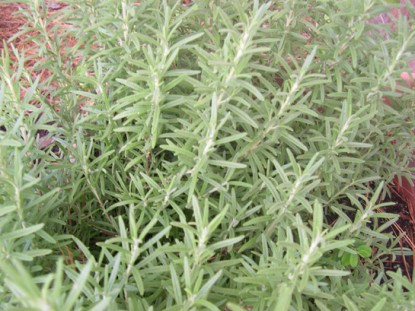
To preserve rosemary, it can be frozen or dried. I much prefer the frozen over dried. Frozen rosemary is closest to fresh, retaining the softness of the leaves instead of the tough, stick-in-your-teeth twigs created by dehydrating.
There are several ways to freeze rosemary and doing so will determine how you’ll harvest. Whole branches of rosemary can be frozen and upon thawing the leaves will slip off the branches. Stubborn leaves will need to be removed by hand and then everything chopped. Taking a few more steps however will give you a more convenient product that won’t interrupt your cooking flow, even when you decide at the last minute your dish is just begging for rosemary.
I prefer to finely chop fresh rosemary in the food processor which means only the soft stems of the plant can be harvested. Harvesting this way leaves the plant nicely pruned which encourages more branching, hence more harvest and a more vigorous plant. To harvest, cut above the brown branch where it starts to turn white (see the photos below). The white stems are softer than the brown sections, and will chop smaller and soften even further in cooking. The hard brown branch won’t, though these too can be cut clear to the main trunk, stripped of all leaves and used as skewers for kabobs on the grill. Yum!
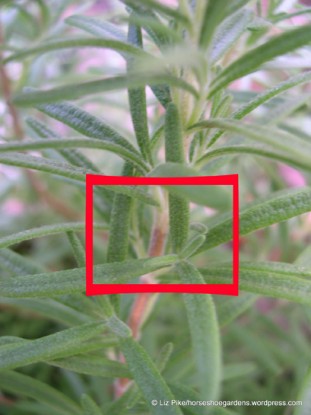
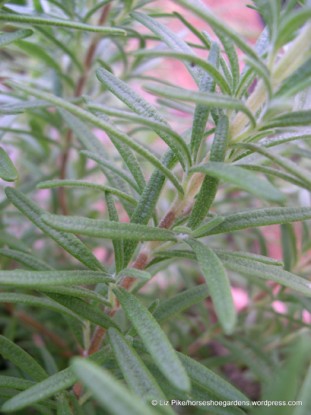
You can see below how my harvesting over the summer has encouraged the plant to branch out more. Note the cut center branch which is where the harvested stem had started turning white. Leaving the brown part encouraged the plant to branch out more below the cut.
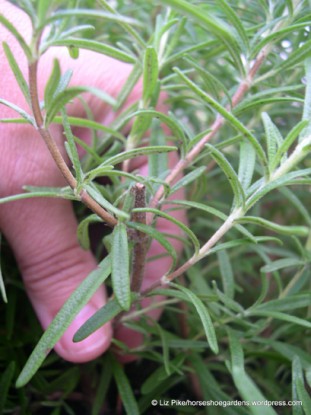
When processing, if the rosemary sticks to the blade or bowl throw in a 1/2 teaspoon of cornstarch to powder up the leaves and absorb some of the oils:
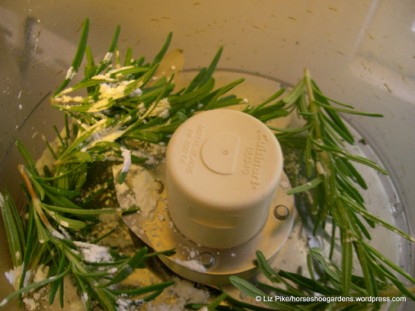
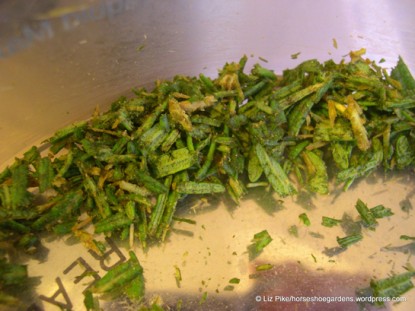
If you don’t have a food processor, just chop by hand. The frozen rosemary keeps best zipped into double freezer bags, or stored into tightly closed jars.
Enjoy!
Liz Pike blogs at Horseshoe Gardens. Do you have a recipe post or kitchen-related story to share on the Farm Bell blog?
See Farm Bell Blog Submissions for information, the latest blog contributor giveaway, and to submit a post.Want to subscribe to the Farm Bell blog? Go here.



Glenda says:
Thanks for this timely post. This is my first year to grow rosemary and I was wondering how to preserve some.
It won’t winter over for me here either.
I may try to keep it alive over winter under my gro-lights.
On August 8, 2011 at 7:35 am
Miss Nellie says:
Thanks for the info Liz. I was wondering if rosemary can be rooted to start more plants? I had one large (very large) plant and then we had and extremely cold winter which killed a lot of my plants including my rosemay. There was only one little sprig left and it is growing but I think I would like more than one plant and was wondering about rooting it.
On August 8, 2011 at 10:10 am
Liz Pike says:
Glenda, the rosemary should do just fine under your gro-lights. It will go a little dormant but it shouldn’t die. Rosemary actually prefers drought conditions so just cut back on watering and don’t harvest as aggressively as in the warmer months.
Miss Nellie, rooting rosemary is the preferred method for propagation. Take a 4-6 inch piece, strip off the lowest leaves leaving the top 3-4 attached, and bury the stem for a couple of inches in a light soil/soilless mixture. The stems need high humidity so put the pot on a tray that can be kept full of water all the time. The stem itself will also need misting with a spray water bottle as many times during the day as you can remember. The spray bottle waters the plant without disturbing the soil. In the greenhouse we have an automatic misting system that measures the humidity then sprays out a heavy mist when the humidity drops. Using the tray and a spray water bottle will replicate this system for you.
In a couple of weeks dig around the stem with a butter knife, chopstick or something similar, and gently lift the plant to see if roots are forming. If they are, leave it where it is for a few more days or until it has developed several good roots. Then pot up like any other plant. Continue monitoring moisture as any new plant does better with consistent moisture than drought/flood conditions. Once the rosemary has established itself in the pot then cut back on the watering and water as usual.
Hth!
On August 8, 2011 at 2:36 pm
Miss Nellie says:
Thank you Liz for the instructions on rooting rosemary. I will try this at once.
On August 10, 2011 at 1:08 pm
kuph8s2cook says:
Thank you for this information. I had never paid attention to the different colors on the stalks. Now, I know what to llok for and how to cut a rosemary!
On November 8, 2011 at 3:14 pm